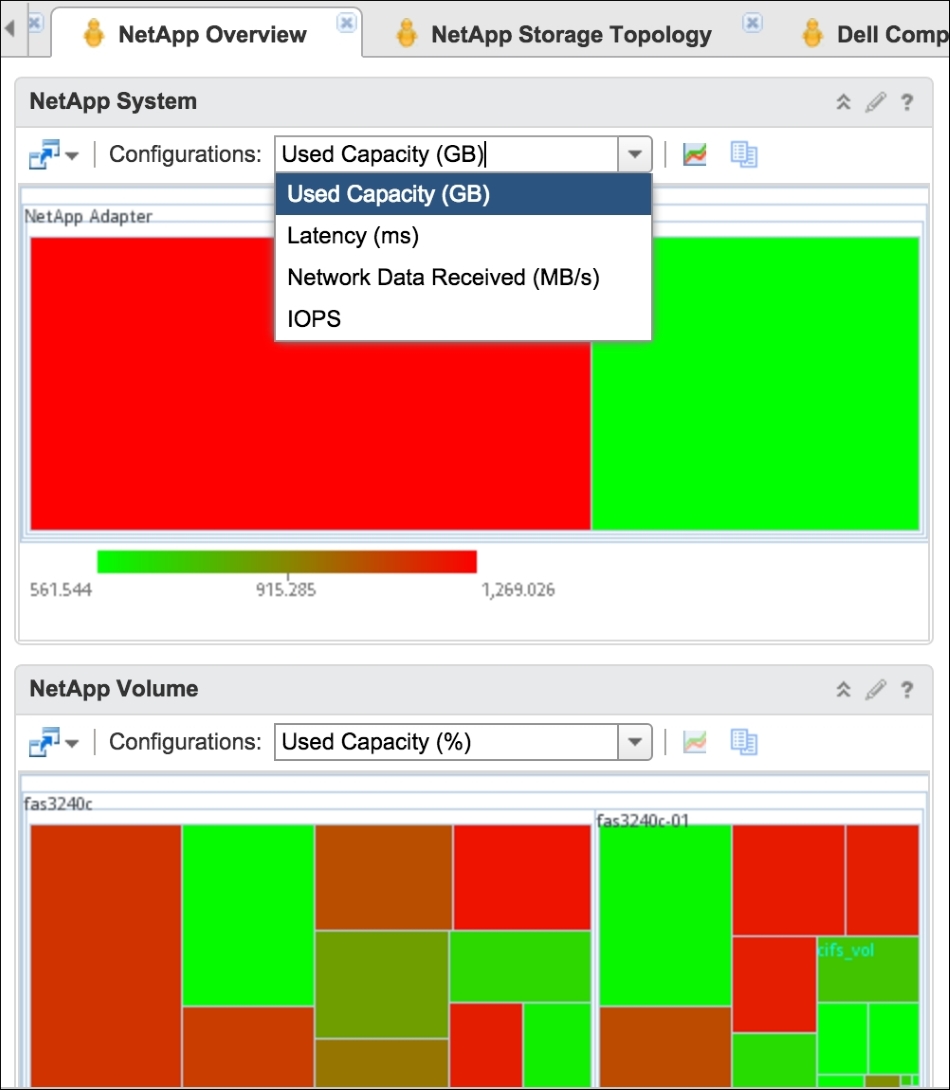Storage is often visualized as the bottom of the enterprise hardware stack—and with good reason. Storage resource performance is paramount to a high-performance data center. It underpins the viability of your entire operation. The management pack for NetApp storage brings the machine-learning powers of vRealize to your controllers, LUNs, volumes, aggregates, clusters, and disks, letting you proactively monitor your storage layer.

The NetApp logical architecture
Information is collected by way of NetApp's API services, an HTTP REST interface that allows access to NetApp performance data without affecting performance.
The key indicators for NetApp performance are latency and IOPS. These metrics are front and center in the NetApp Overview dashboard. Heat maps are presented for each piece of a NetApp array, from a high-level roll-up view of the system down to individual volumes. The color of each object gives an immediate reading of its performance:

The NetApp Overview dashboard showing...



